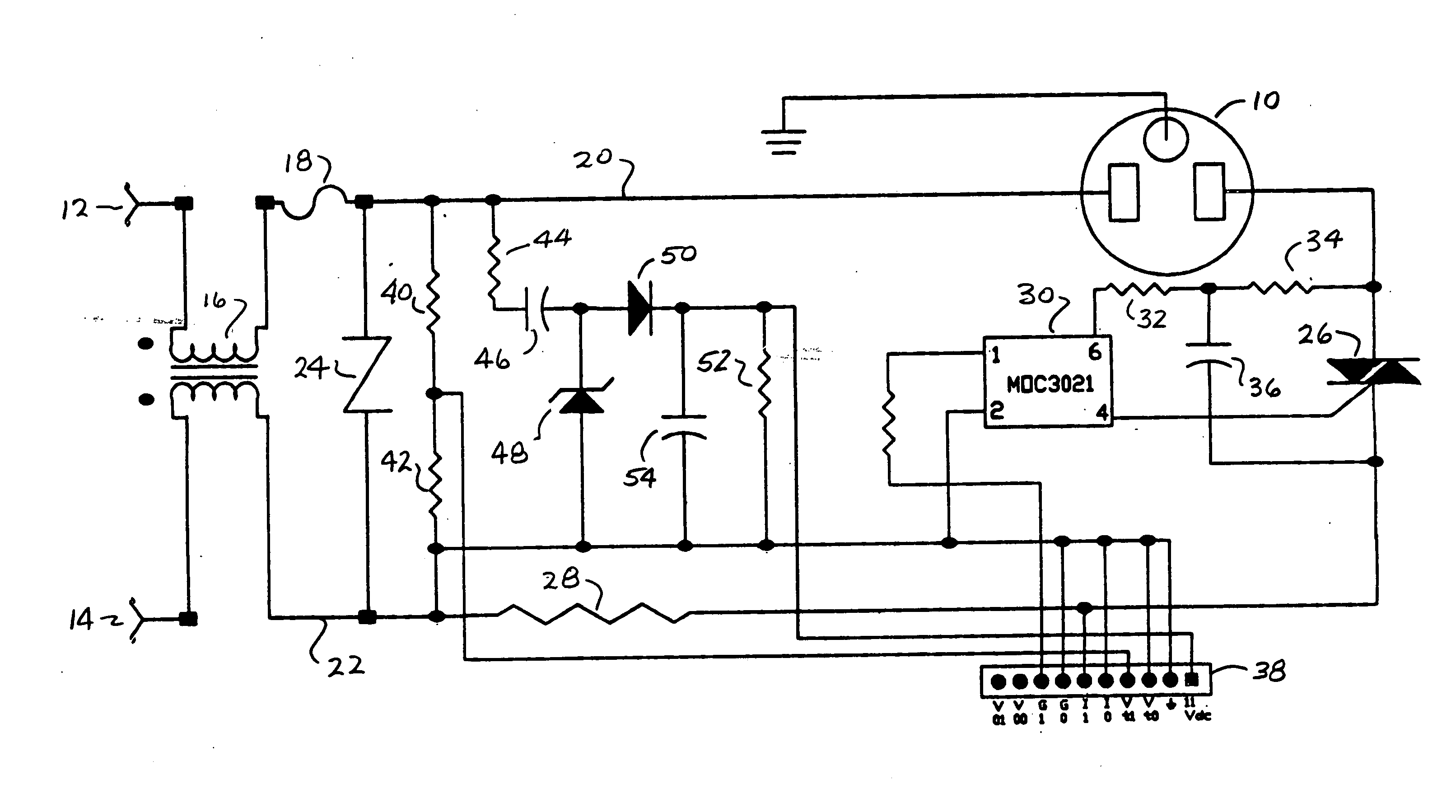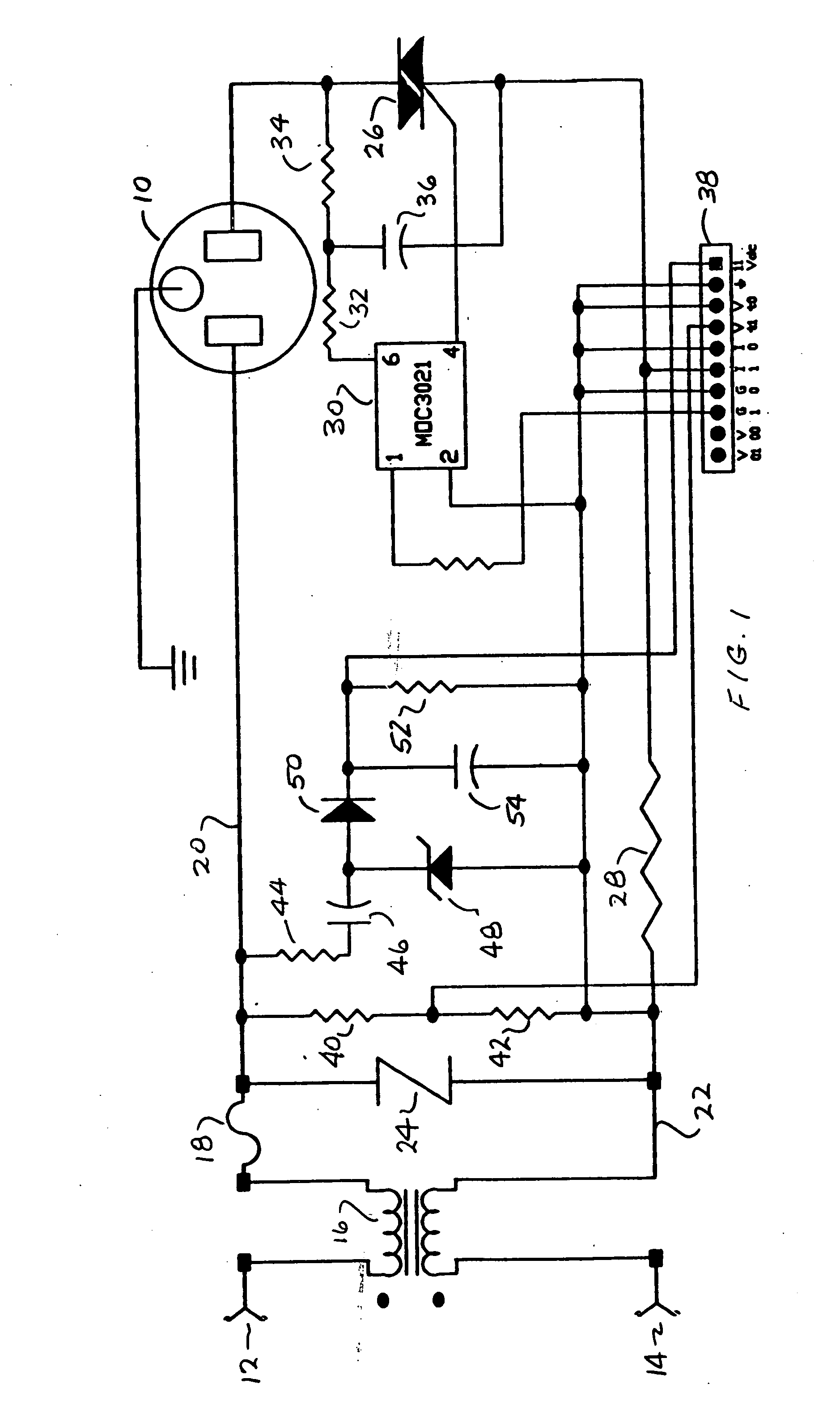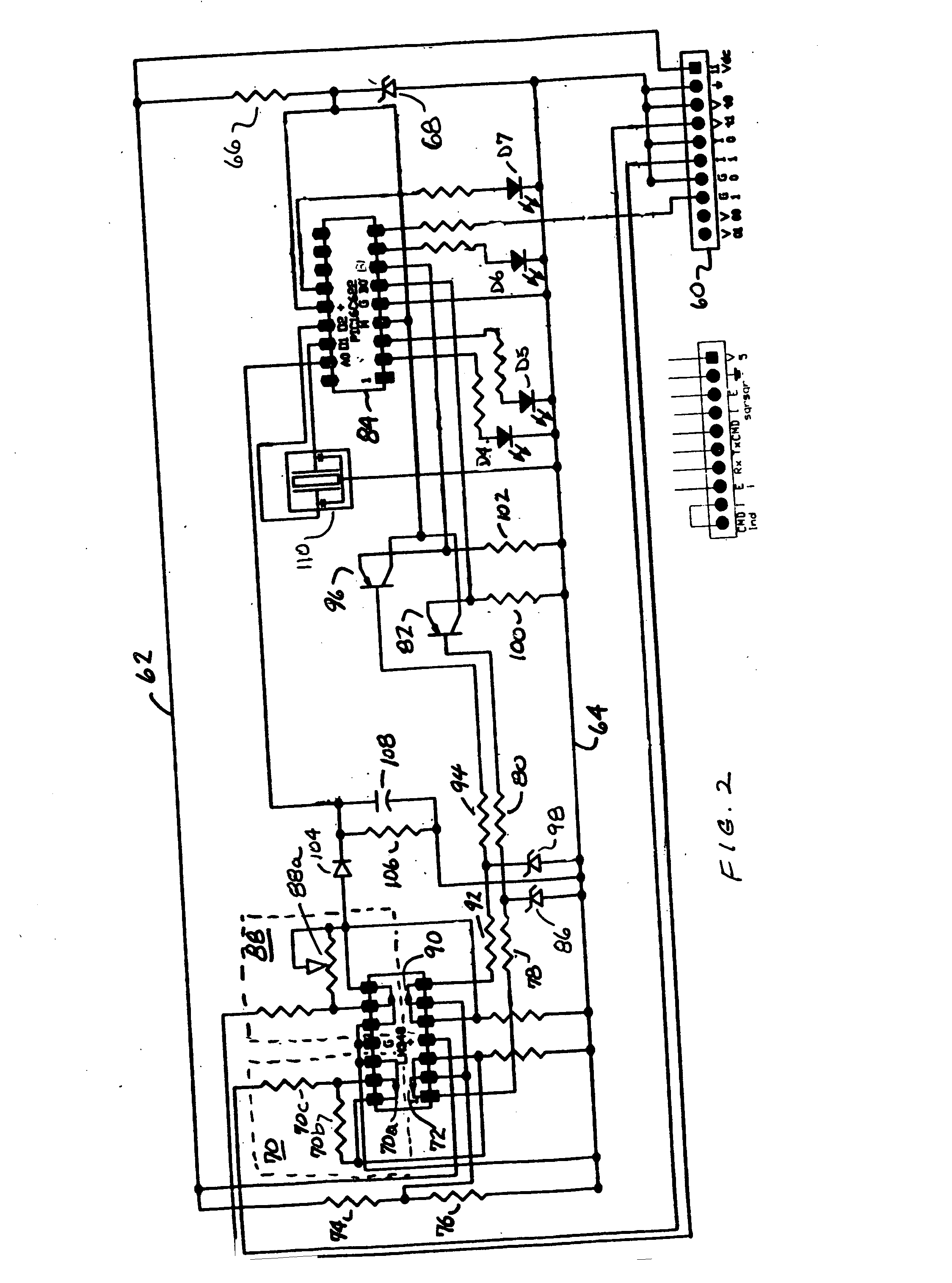Power factor correction circuit
a technology of power factor and control circuit, which is applied in the direction of ac network circuit arrangement, ac network voltage adjustment, instruments, etc., can solve the problems of motor efficiency, power factor deterioration, power factor control, etc., and achieve the effect of preventing motor stalling or overheating, and reducing the measured time delay
- Summary
- Abstract
- Description
- Claims
- Application Information
AI Technical Summary
Benefits of technology
Problems solved by technology
Method used
Image
Examples
Embodiment Construction
[0013]FIG. 1 is a schematic representation of an alternating current (AC) power control circuit for supplying power to an AC load 10 which may be, for example, an AC induction motor. While the invention will be described in terms of a single-phase load 10, it will be apparent that the invention is equally applicable to multi-phase applications such as, for example, a three-phase AC motor. In the circuit of FIG. 1, AC power from an external AC source such as an AC utility power connection is applied to terminals 12 and 14 and coupled through a toroidal coil inductor 16 and series fuse 18 to a pair of AC power buses 20, 22. An over voltage protection device such as a metal oxide varistor (MOV) 24 is connected between the buses 20 and 22. The bus 20 is connected to the first terminal of the load 10 while the bus 22 is connected to a second terminal load 10 through a series electronic switching device such as a triac 26. The circuit also includes a current sensing resistor 28 connected ...
PUM
 Login to View More
Login to View More Abstract
Description
Claims
Application Information
 Login to View More
Login to View More - R&D
- Intellectual Property
- Life Sciences
- Materials
- Tech Scout
- Unparalleled Data Quality
- Higher Quality Content
- 60% Fewer Hallucinations
Browse by: Latest US Patents, China's latest patents, Technical Efficacy Thesaurus, Application Domain, Technology Topic, Popular Technical Reports.
© 2025 PatSnap. All rights reserved.Legal|Privacy policy|Modern Slavery Act Transparency Statement|Sitemap|About US| Contact US: help@patsnap.com



